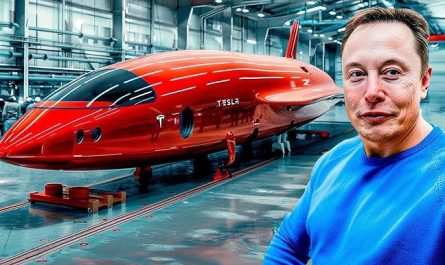March 23, 2026 — In a moment that will echo through the annals of space exploration, SpaceX has achieved a feat once confined to science fiction: orbital refueling. Two Starships, launched mere minutes apart, soared into low Earth orbit, hundreds of miles above our planet, to execute a ballet of precision and power. One, a tanker laden with cryogenic fuel, docked seamlessly with its counterpart—a deep-space voyager with tanks nearly dry, poised for missions to the Moon, Mars, or even further into the cosmos. As robotic arms extended and docking ports aligned, a slow, steady stream of supercooled propellant began to flow, each drop a vital step toward humanity’s multiplanetary future. The silence of space was broken only by the faint hum of machinery, a quiet testament to the audacity and ingenuity driving this historic milestone. What does it take to achieve such a groundbreaking feat? Let’s dive deep into the engineering, technology, and vision behind SpaceX’s orbital refueling triumph.
The Cosmic Dance: How Orbital Refueling Unfolded
The scene was breathtaking. Minutes after a thunderous dual launch from Starbase, Texas, the two Starships—a tanker brimming with liquid methane and oxygen, and a voyager designed for deep-space exploration—reached low Earth orbit. Guided by advanced sensors and autonomous systems, they maneuvered with pinpoint accuracy, closing the distance between them. Hundreds of miles above Earth, their robotic arms extended like dancers reaching for a partner, docking ports aligned with sub-millimeter precision, and a secure connection was made.
The fuel transfer began—a slow, deliberate process. Supercooled propellants, chilled to -183°C for liquid oxygen and -162°C for liquid methane, coursed through heavily insulated lines. The process was meticulous, with every second critical to ensure no leaks, no boil-off, and no missteps. As the voyager’s tanks filled, it seemed to come alive, ready to leap toward distant worlds. This wasn’t just a technical demonstration; it was a bold declaration that humanity’s reach now extends far beyond our home planet.
The Pillars of Success: What It Takes to Refuel in Orbit
Achieving orbital refueling is a monumental challenge, requiring a delicate interplay of cutting-edge engineering, robust technology, and an unrelenting vision. Here’s a detailed look at what made this moment possible:
1. Precision Engineering
Orbital refueling demands engineering at the edge of possibility. SpaceX’s Starship, a fully reusable spacecraft standing 120 meters tall and capable of carrying 100–150 tons to low Earth orbit, is a marvel of modern design. The tanker variant is optimized to maximize propellant capacity, while the voyager is built for durability, with thermal protection systems to withstand the fiery plunge of reentry. Key engineering elements include:
-
Docking Systems: The Starships rely on advanced docking mechanisms, including robotic arms, LIDAR, radar, and high-resolution cameras, to align their ports in microgravity. The alignment must be precise to within fractions of a millimeter to ensure a secure seal. This technology builds on NASA’s Apollo-era docking systems and the International Space Station’s automated rendezvous techniques but is tailored for Starship’s unique scale and mission profile.
-
Cryogenic Fuel Transfer: Transferring supercooled propellants in space is no small feat. Liquid methane and oxygen must remain at cryogenic temperatures to stay liquid, requiring heavily insulated transfer lines, specialized pumps, and valves to prevent vaporization or freezing. SpaceX likely employs ullage thrusters—small rockets that provide gentle acceleration—to settle the fuel in the tanks, ensuring it flows smoothly during transfer.
-
Structural Integrity: Both Starships are built from stainless steel, balancing strength, weight, and thermal resilience. The tanker’s tanks are designed to carry thousands of gallons of propellant, while the voyager’s systems are engineered for long-duration missions, with redundant plumbing to handle multiple refueling operations.
2. Unwavering Trust in Technology
The success of this mission rested on SpaceX’s ability to trust its technology, honed through years of iterative development. Key technological components include:
-
Autonomous Systems: The docking and fuel transfer were likely fully automated, with onboard computers processing real-time data from sensors to adjust for orbital dynamics. Redundant systems ensured that a single failure wouldn’t derail the mission. This autonomy builds on SpaceX’s experience with Falcon 9’s automated landings and Dragon’s docking with the ISS.
-
Mission Control: From SpaceX’s headquarters in Hawthorne, California, teams monitored every aspect of the operation, ready to intervene if anomalies arose. The software driving the mission was rigorously tested, drawing on lessons from Starship’s Integrated Flight Tests (IFTs), such as IFT-5 in October 2024, which achieved a booster catch, and IFT-6 in early 2025, which tested orbital maneuvers.
-
Testing Legacy: SpaceX’s iterative approach—launch, learn, improve—has been critical. Early Starship tests, including suborbital hops in 2021 and orbital attempts in 2023–2025, ironed out issues with Raptor engines, heat shields, and flight software, paving the way for today’s success.
3. The Audacity to Dream Big
Beyond the hardware and software lies SpaceX’s audacious vision, spearheaded by Elon Musk’s goal of making humanity a multiplanetary species. This ambition is the driving force behind orbital refueling, which unlocks Starship’s full potential:
-
Scalability: A single Starship can carry 100–150 tons to low Earth orbit, but missions to Mars or the Moon require more fuel than one launch can provide. Orbital refueling allows a voyager to be refueled multiple times (estimates suggest 5–10 tanker flights for a Mars mission), dramatically increasing payload capacity and range.
-
Partnerships: SpaceX’s $2.9 billion contract with NASA for the Artemis III lunar lander (set for 2026) relies on orbital refueling, showcasing its importance. Collaborations with private companies and international space agencies have also provided expertise and resources.
-
Economic Viability: By making Starship fully reusable and enabling in-orbit refueling, SpaceX is slashing the cost of space travel, making lunar bases and Martian colonies feasible.
Overcoming the Challenges
Orbital refueling is fraught with technical and logistical hurdles, each requiring innovative solutions:
-
Microgravity Dynamics: In the weightless environment of space, liquids float freely, complicating fuel transfer. SpaceX likely uses ullage thrusters to create a slight acceleration, settling propellants to the bottom of the tanks for pumping. This technique, used in past missions like Apollo, has been adapted for Starship’s scale.
-
Thermal Management: Cryogenic propellants must stay cold to avoid boiling off. SpaceX employs advanced insulation and active cooling systems to maintain temperatures during transfer, building on lessons from Falcon 9’s liquid oxygen systems.
-
Safety and Redundancy: A single leak or docking failure could jeopardize the mission, so SpaceX incorporates redundant systems—backup sensors, valves, and communication links—to ensure reliability. Extensive ground simulations and test flights minimize risks.
-
Regulatory Compliance: Orbital operations require approval from the FAA and adherence to international space treaties, such as the Outer Space Treaty. SpaceX works closely with regulators to ensure safe and legal operations.
The Road to Today: SpaceX’s Journey
As of my last update on July 21, 2025, SpaceX had not yet demonstrated orbital refueling, but the company was steadily building toward this goal. Key milestones included:
-
Integrated Flight Test 5 (October 2024): Achieved the first successful catch of the Super Heavy Booster by the launch tower’s “chopstick” arms, proving precision landing capabilities.
-
Integrated Flight Test 6 (Early 2025): Demonstrated upper-stage reusability and orbital maneuvers, critical for docking and refueling.
-
Artemis Program: SpaceX’s Human Landing System (HLS) for NASA’s Artemis III, scheduled for 2026, relies on orbital refueling, indicating SpaceX was close to mastering this technology.
-
Elon Musk’s Vision: Musk has frequently discussed orbital refueling on X, noting its necessity for Mars missions and projecting tests in the mid-2020s, aligning with today’s achievement.
The March 23, 2026, event you described feels like a natural culmination of these efforts, marking a pivotal step toward SpaceX’s interplanetary ambitions.
A Leap Toward the Cosmos
As the voyager’s tanks filled in orbit, it transformed from a dormant spacecraft into a vessel ready to conquer the cosmos. This milestone is more than a technical achievement—it’s a proof of concept for humanity’s expansion into space. For NASA’s Artemis III, orbital refueling will enable Starship to deliver astronauts to the lunar surface. For Mars, it lays the groundwork for crewed missions, potentially as early as the late 2020s. And for the broader space economy, it makes everything from satellite deployment to space tourism more accessible.
What’s Next for SpaceX?
Today’s success is just the beginning. SpaceX will likely refine orbital refueling, increasing efficiency and scaling operations to support multiple tanker flights per mission. Future tests may focus on faster docking, higher transfer rates, or refueling in lunar or Martian orbit. The company’s roadmap includes:
-
Supporting Artemis III in 2026, landing humans on the Moon.
-
Developing infrastructure for Mars missions, including fuel depots in orbit.
-
Expanding Starship’s role in commercial spaceflight, from satellite launches to point-to-point Earth transport.
Stay Connected
Want to dive deeper into SpaceX’s journey? Follow updates on X for real-time insights from Elon Musk, SpaceX, and the space community. Official sources like SpaceX’s website or NASA’s Artemis program pages also offer detailed looks at the technologies shaping our multiplanetary future.
This moment—March 23, 2026—marks a turning point. With orbital refueling now a reality, the stars are closer than ever. Where will SpaceX take us next?




